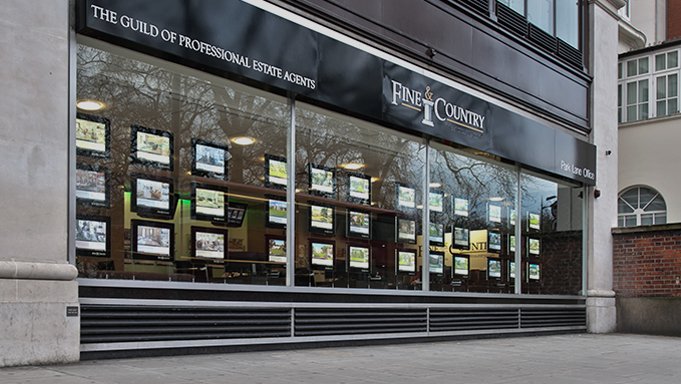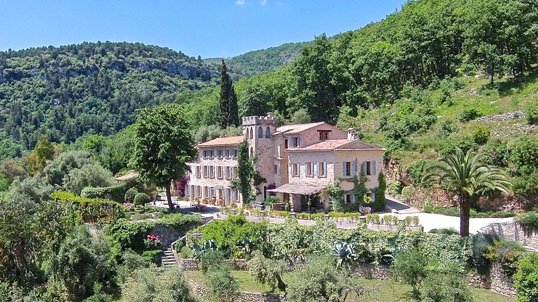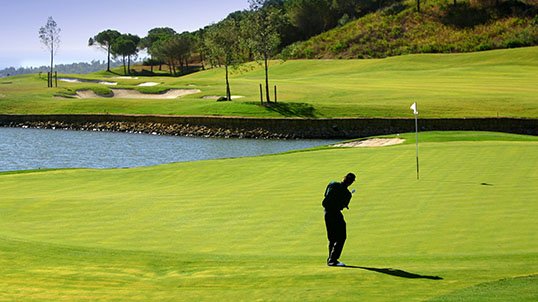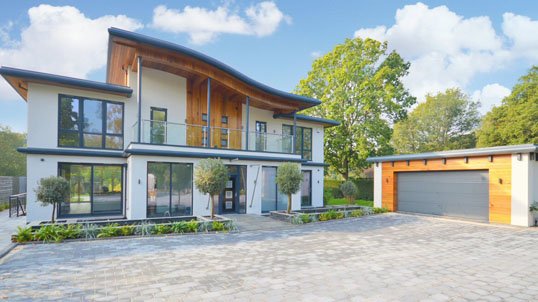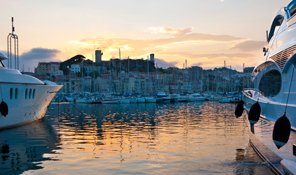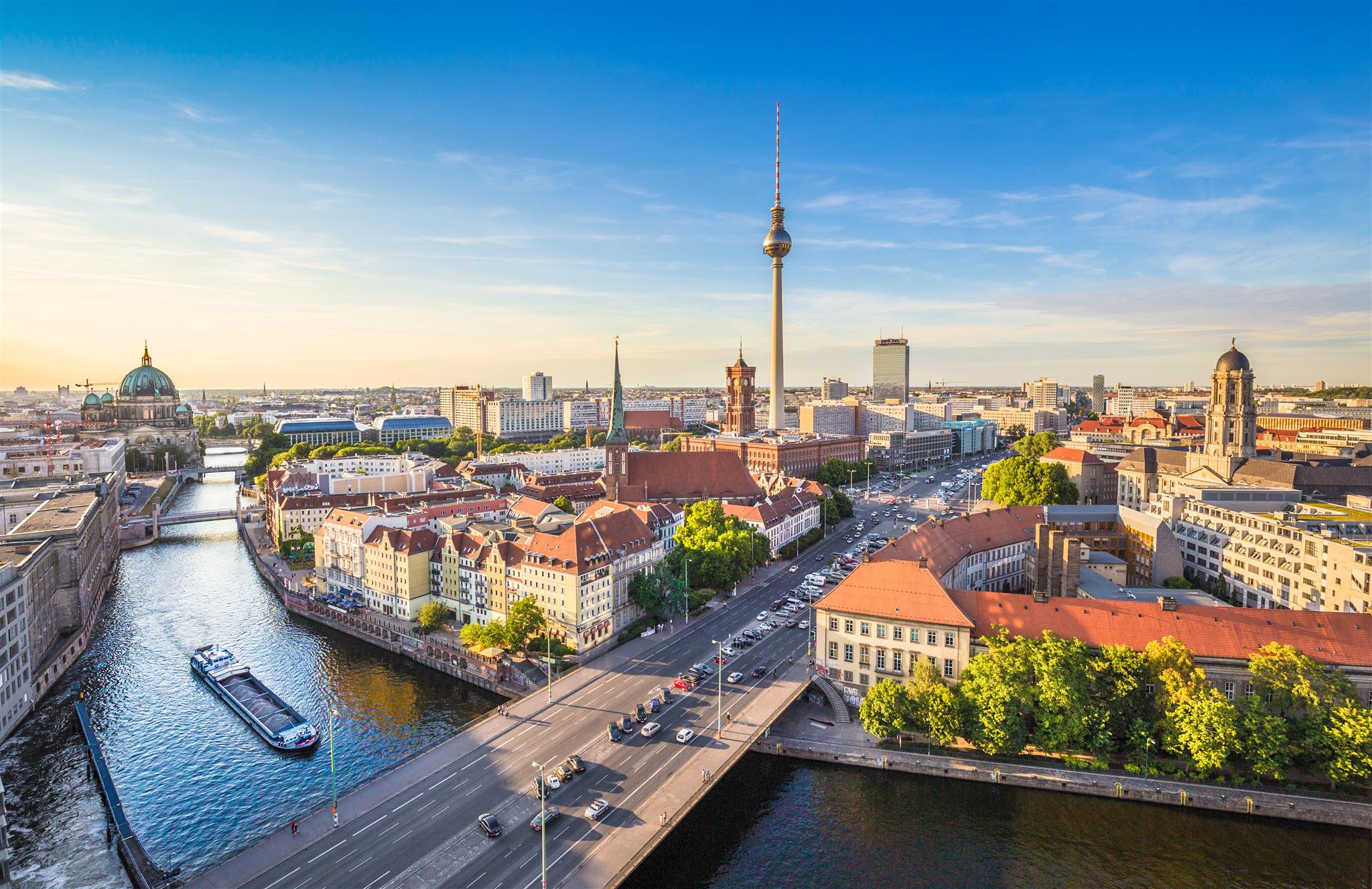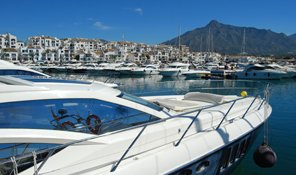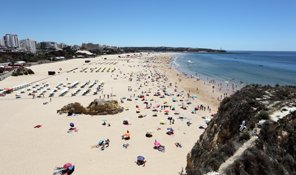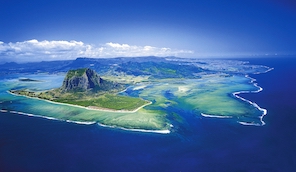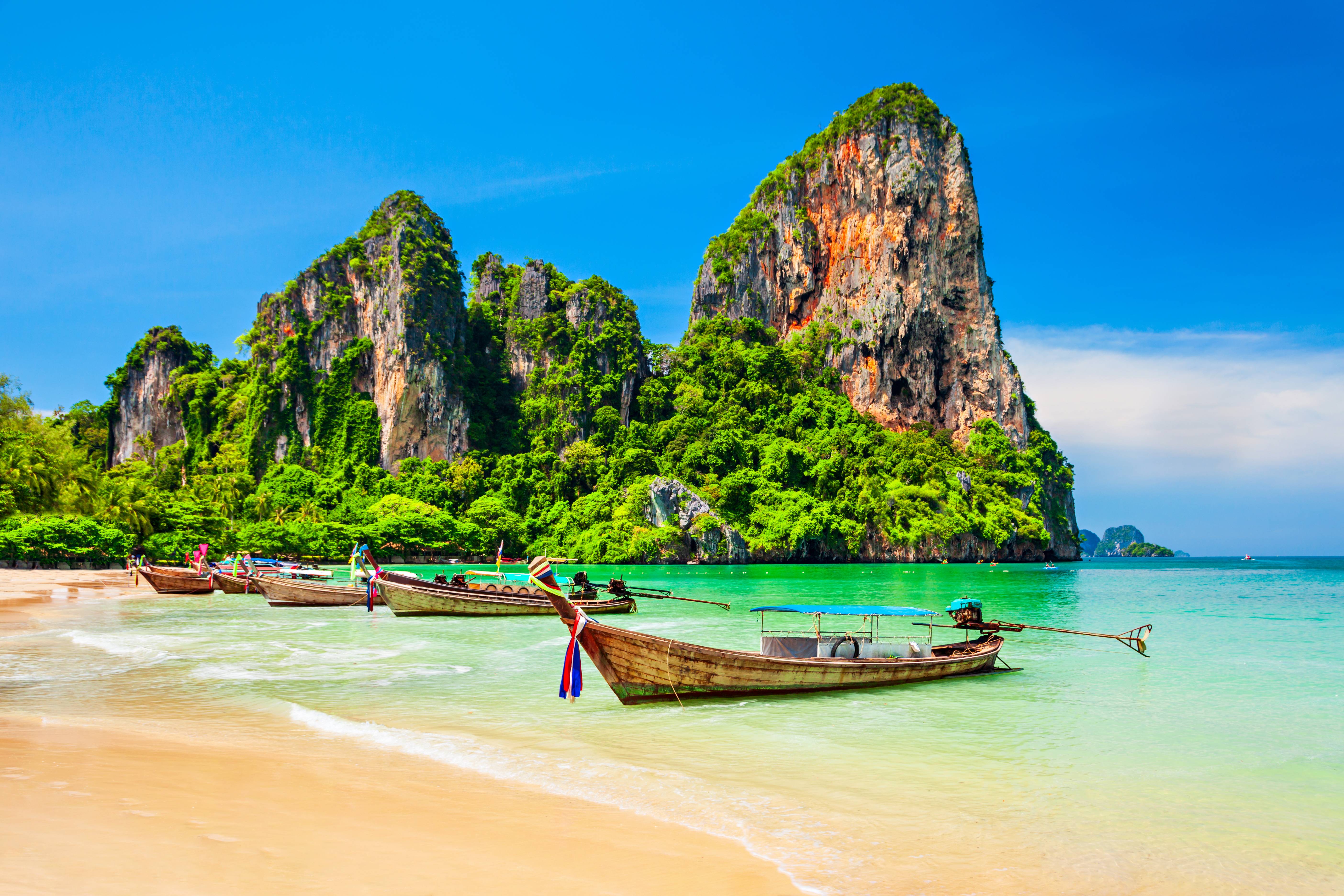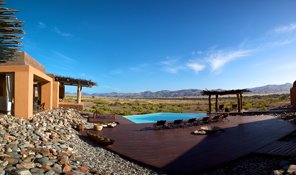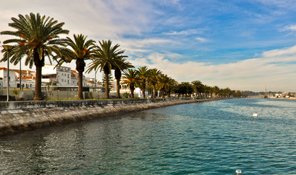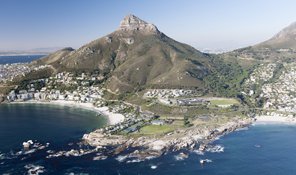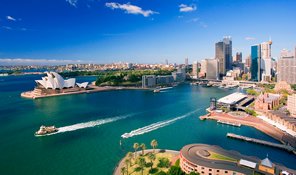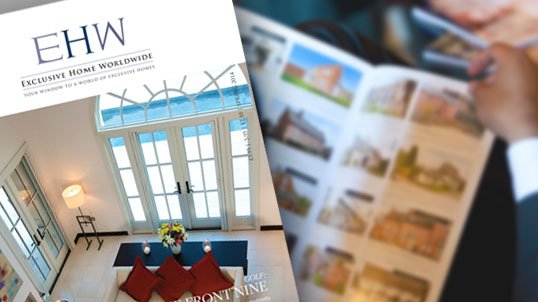Cannes Location Guide
![fullsizerender[3]](https://services-media.propertylogic.net/website/1453828143/fullsizerender[3].jpg)
Palm Beach, Cannes
A village in the city at the Tip of the Croisette. Palm Beach peninsula is internationally renowned for its beautiful beaches, but it is also home to some of the most exquisite luxury property. On the western side of the peninsula are the beaches of the Boulevard de la Croisette and the aptly named Bijou Plage (Jewel Beach), while the glorious family orientated sandy beaches of Boulevard Gazagnaire run the length of the eastern side, facing the Iles de Lérins. The Place de l’Etang so well known for its competition “pétanque” or “boules” and so loved by Henri Salvador among many famous aficionados is at the heart of the peninsula; at its point lies the famous 1930’s Palm Beach Casino; and at its base, closest to Cannes itself, is Port Canto yacht basin to billionaires and mere mortals alike. Extremely prized for its real estate, for its luxury apartments and dream homes, it is also sought after for its practicality, its safety, its quiet, and its ideal and pleasant life style and surroundings. The suburb of Palm Beach offers all conveniences (such as shopping, doctors, dentists, hairdressers…) and very fine restaurants including the celebrated sea food restaurant Fred l’Ecailler. A SHORT PERSONAL DESCRIPTION OF “PALM BEACH” CANNES FROM A RESIDENT. We happen to be fortunate enough to live and work in Palm Beach and we love it, and it is our experience that every visitor we ever have to Cannes falls in love with Palm Beach too. It is the little suburb on the peninsula that forms the eastern extent of the Croisette, and points like a finger from the hills above Cannes in La Californie to the Islands – the Isles de Lerins – a few hundred meters offshore. It is only three blocks wide with two streets running north-south through it, and three (or four depending on where you draw the boundary) running across it from the beaches and Port Canto on the west overlooking Cannes and the Bay of Cannes, to the beaches and Port Moure Rouge on the east looking across Golfe Juan to the islands, to Juan les Pins and Antibes. Palm Beach is prime real estate in France – it is beautiful, safe, warm and sought after, and whereas Cannes has razzmatazz, Palm Beach is quiet and is really a “village apart”. Yet it only takes 15 minutes to walk from our apartment to the very centre of Cannes, along the famous, well lit and lovely Croisette, past dream homes and luxury apartment blocks, all the way through lovingly tended gardens along the water’s edge. It is truly a beautiful walk. At the tip of Palm Beach is the famous 1930’s Palm Beach Casino which serves as a marvellous and most dramatic venue for many world class concerts and events. Just a little closer in is the Place de l’Etang which is the heart of world pétanque, surrounded by at least five restaurants ranging from a top-class seafood restaurant (Fred l’Ecailler – google it to find out more) to local and affordable French and Italian, and a variety of small shops serving the neighbourhood. A little closer in still is the Village Sablons which has Cesarine the best boulangerie-patisserie in the world in our opinion (baking the best baguette) and serving magnificent coffees, croissants and pastries, two small groceries, a delicatessen, two traditional butcheries and a specialist poissonerie or fish shop (doesn’t it sound better in French!), a post office, pharmacy, hairdresser, laundry, and a newsagent. It is all quite charming and one could be a hundred miles from Cannes, not just a stone’s throw. There is no more land to build on and only one Palm Beach this side of the Atlantic. Safety, value for money and quality of life and property are the phrases that probably sum it up best, and it is quite beautiful too, whichever way you look
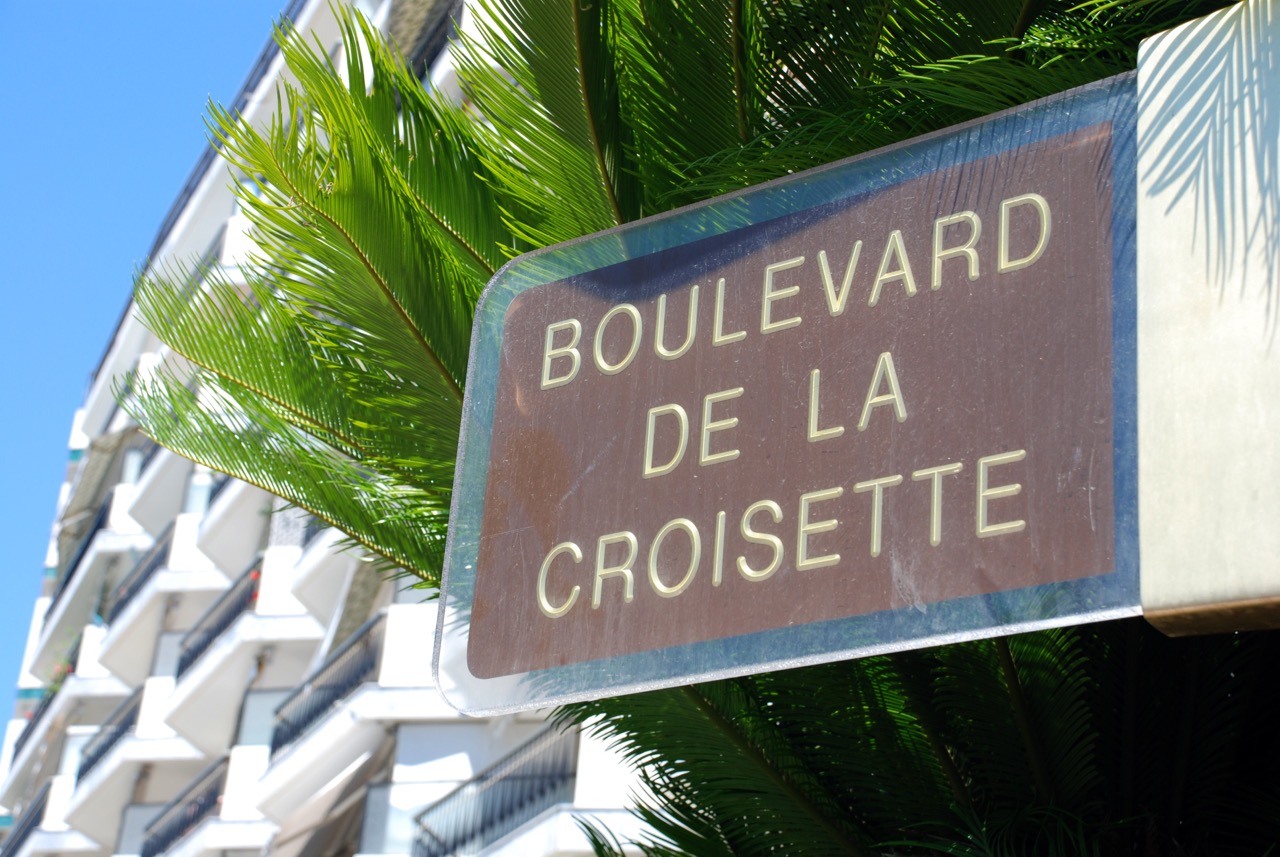
La Croisette, Cannes
Who hasn’t heard of La Croisette? This unique and world famous Boulevard follows the ancient seaside road known as the “chemin de la petite croix” or the “road of the little cross”, from where it derives its name. It is best known for the many congresses that take place at the Palais des Festivals and in particular the ” Festival International du Film”, and the countless stars that crowd the stairs and the red carpets. The frenzied invasion of the Croisette each May at Film Festival time lends notoriety to the hot spots of Cannes and luxury is omnipresent through the high-end boutiques, the star chefs, the five star hotels, and the luxury apartments and residences so popular with the cognoscenti of Europe and the world. However there is much more to it than that. The sandy beaches are meticulously cared for and cleaned both on-shore and off, and the beach bars and restaurants are of a quality and gastronomic appeal to rival any in the world, welcoming and elegant. The very extensive gardens and walks along its 3km length from the Old Port and the Palais des Festivals in the west, past some of the most impressive real estate in the world, to the Pointe Croisette at the farthest eastern end of Palm Beach are beautifully gardened. There is street art on display, there are sections given over to roller skaters, to pavement artists, to exceptional rose gardens and in winter fabulous displays of cyclamen; there are no less than three ports with yachts and boats of all sizes through which one is free to wander if one wishes, and there are fairs, country markets, and world beating fireworks displays set to music, enjoyed by thousands who turn out onto the Croisette, and many more watching from their apartment balconies and homes. For the ordinary resident or holiday-maker there is little to beat a leisurely stroll along the Croisette in the warm evening sun in winter or summer, to watch the magnificent sunsets across the bay lighting up the bright red Esterel Hills in the west, and to stop for a glass of chilled rosé and a few olives while quietly observing the world go by. Hundreds turn out, children on their scooters and parents and pushchairs, and yes, the occasional face you may recognise from a magazine or a film. Not quite as popular but every bit as enjoyable are the mornings when the Croisette wakes up to the beat of early joggers, and the footsteps of those who prefer a brisk walk to get the circulation going, and a stretch of their legs before a busy day. The Croisette is for all people, for all occasions, and for all seasons.
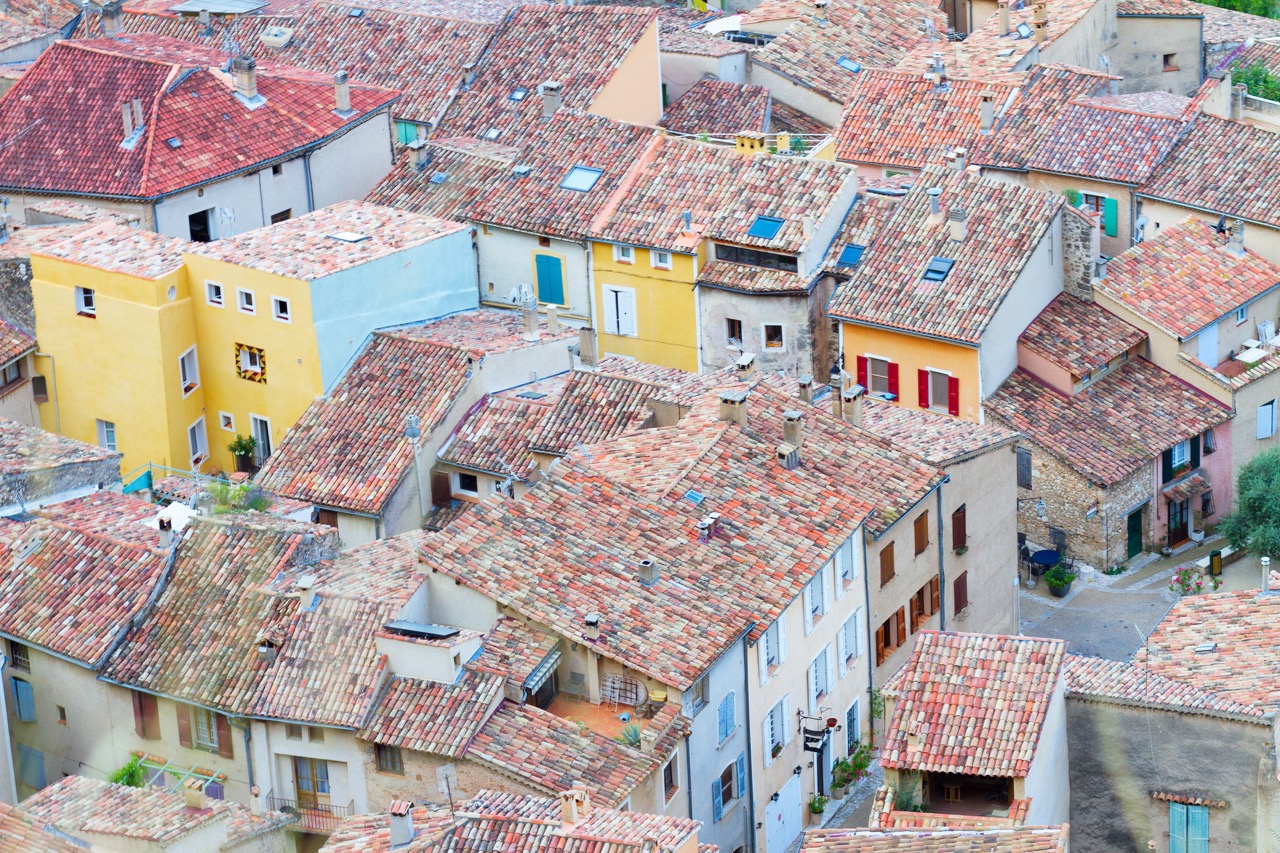
Le Cannet, Cannes
Le Cannet is a popular residential suburb in the quiet hills close to the eastern edge of Cannes, and home to a few really exclusive apartment blocks with panoramic views, and dotted with luxurious villas. It is an extension of Super Cannes and abuts Mougins at its northernmost edge. Situated as it is just inland of Cannes, Le Cannet was considered a part of Cannes until 1774 when it was separated administratively to become its own commune. Built on the gentle slopes of seven hills the views of Cannes, the Bay of Cannes, the Islands of Lerins and the “sunset hills” of the Massif Estérel far to the west are breathtaking. The Mairie is proud of Le Cannet and maximises its advantages whenever it is able to, most recently by turning a rough track following the contour from above the Old Town eastwards past many glorious villas towards Golfe Juan, a path used by the Romans (there are still traces of the old Roman road), into what is now a lovely walk with numerous spectacular viewing points along its length. We long ago discovered the “Old Town” of Le Vieux Cannet and have been regulars there ever since. It is not frequented much by tourists although it has some notable attractions, character townhouses and villas and some truly excellent restaurants – our favourite is “Le Coin Gourmet”, but a more recent addition is “La Villa Archange” in Rue Notre Dame des Anges owned by renowned chef Bruno Olger formerly of the Majestic Hotel in Cannes, and awarded two Michelin Stars in Le Cannet in 2011. There are many others and dining in Le Cannet is both a well kept secret delight, and affordable! Le Vieux Cannet is a maze of twisting narrow cobbled streets, chapels, artisan workshops, and beautiful turn of the century properties surrounded by secret gardens away from the noise of the city. It is rich in culture and history and L’Eglise Sainte-Catherine built in 1556 is a treasure trove, as are Les Chapelles de Notre-Dame and Saint-Sauveur. Within the maze one stumbles across frescos and tromps l’oeils, including the Heritage Orange Tree fresco on the spectacular open Place Bellevue showing the family tree of the 140 families from Italy who founded Le Cannet in 1441. Perhaps the most visited attraction however is the Musée Bonnard. Pierre Bonnard who died in 1947 lived and worked in Le Cannet and regularly walked the village streets and the Roman contour path for inspiration. Matisse described him as “the greatest amongst us”. Many of his major works are on exhibition at the Museum and it is well worth a visit.
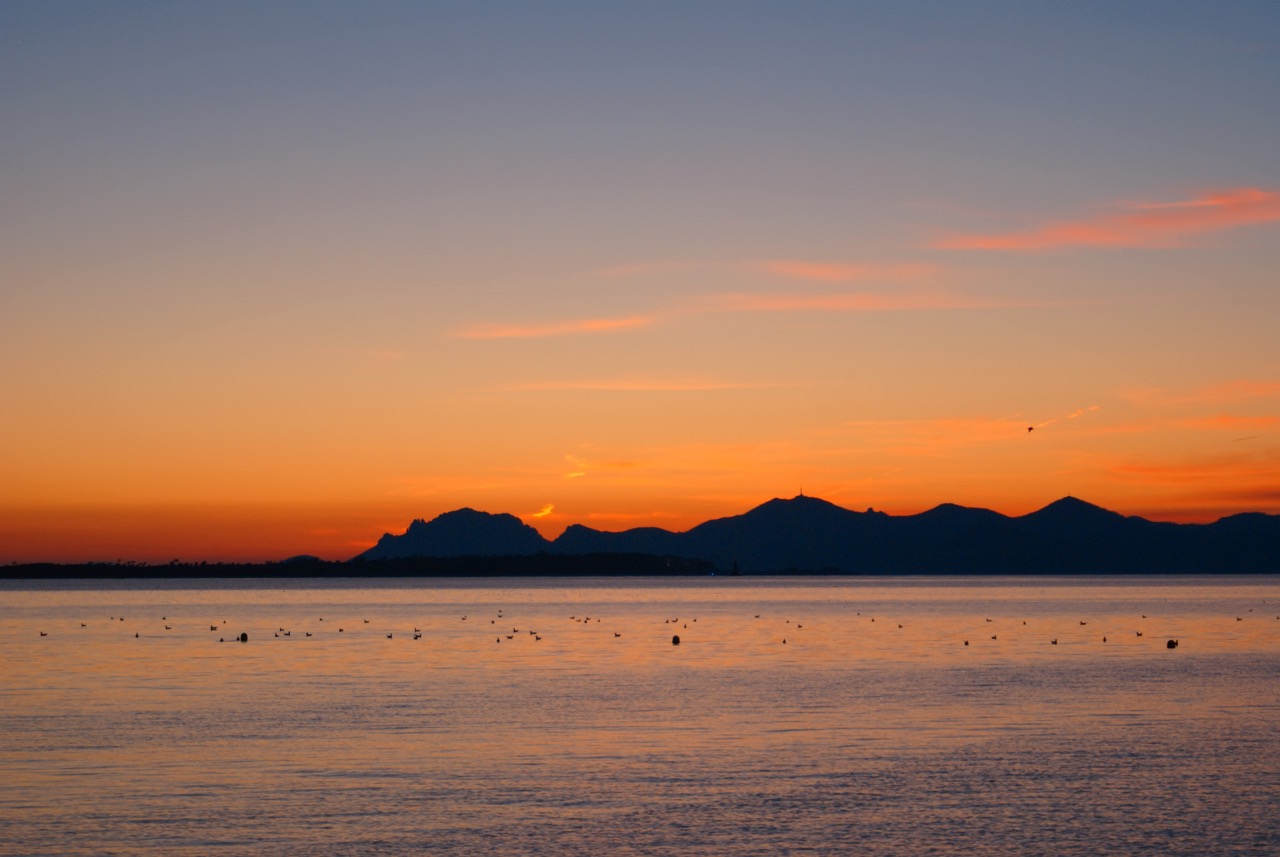
Super Cannes, Cannes
The area in the hills dominating Cannes, home to many of the most exclusive homes and residences in the world is known generically as Super Cannes. The area (which is not well defined) rises above prestigious La Californie, and lies above and to the east of Le Cannet, blanketing the higher slopes of Cannes’ southern and eastern hillsides and spilling over the top, tailing off as one starts to descend towards Golfe Juan and Vallauris. It is an area which is unashamedly comfortable with opulence, embracing the needs and aspirations of the “real” jet-set, royalty and stars from across the globe. The properties in Super Cannes are generally on large plots of land, spacious and enclosed and beautifully landscaped, and the panoramic views across Cannes, to the Cap d’Antibes in the east and the blood-red Esterel Mountains in the west are unsurpassed in their beauty. On these plots are some of the most exclusive and private homes in the world. An important added attraction of Super Cannes is its proximity to the sea and the beaches and harbours of Cannes (2 kms), the International School in Mougins (5 – 7 kms) and the Nice International Airport (25 kms). The airport is on the western (the closest) side of Nice so that it is not necessary to traverse or navigate around the city to get there – it is a straight run of less than 30 minutes which is hugely convenient to the residents of Super Cannes.
![fullsizerender[22]](https://services-media.propertylogic.net/website/1453828143/fullsizerender[22].jpg)
The Iles de Lérins, Cannes
A very short distance from the Croisette, just across the Bay of Cannes and clearly visible from the luxury apartments and homes along its length are the two enchanting Islands of Lérins, St. Marguerite and St. Honorat, for which ferries depart from Cannes every half an hour. In addition to the historic and cultural treasures these islands hold, the beaches and pristine azure sea are glorious. It is possible to walk right around either island and find private beaches and magical coves with nobody there, or very few. The bays are enjoyed by many private boat owners who moor for the day in summer. To pack a picnic lunch with a cold bottle or two of local rosé and head for the islands in a hire boat or the ferry is a wonderful way to spend a day. The nearer island Isle St Marguerite is named after St. Honorat’s sister of that name who lived here with a group of nuns in the 5th century. Close to the dock where the boat lands is the Fort de l’Ile, built by Spanish troops from 1635 to 1637. Below that is the 1st-century-B.C. Roman town where the unlucky man immortalized in The Man in the Iron Mask was imprisoned. He remains one of French history’s most perplexing mysteries, a prisoner of Louis XIV who arrived at Ste-Marguerite in 1698. Dumas popularized the theory that he was a brother of Louis XIV, but whoever he really was he died in the Bastille in Paris in 1703. A visit to his lonely cell where one can stand listening to the sound of the sea brings home what a forlorn outpost this must have been. Also worth a visit is the Musée de la Mer which traces the history and homes of the island with exhibits of artefacts of Ligurian, Roman, and Arab civilizations, plus remains discovered in excavations, including paintings, mosaics, and ceramics. Ile St-Honorat is less than 2km long, but richer in history. It remains the site of the oldest working monastery in Europe whose origins go back to the 5th century. Today the Abbaye de St-Honorat combines medieval ruins and early-20th-century ecclesiastical buildings, home to a permanent community of about 30 Cistercian monks. If space is available, outsiders can visit overnight for prayer and meditation only. However, most visitors come to wander through the pine forests on the island’s western side, to buy the highly regarded wine still made by the monks in age-old fashion and tradition, and to sun themselves on its quiet and lovely beaches.
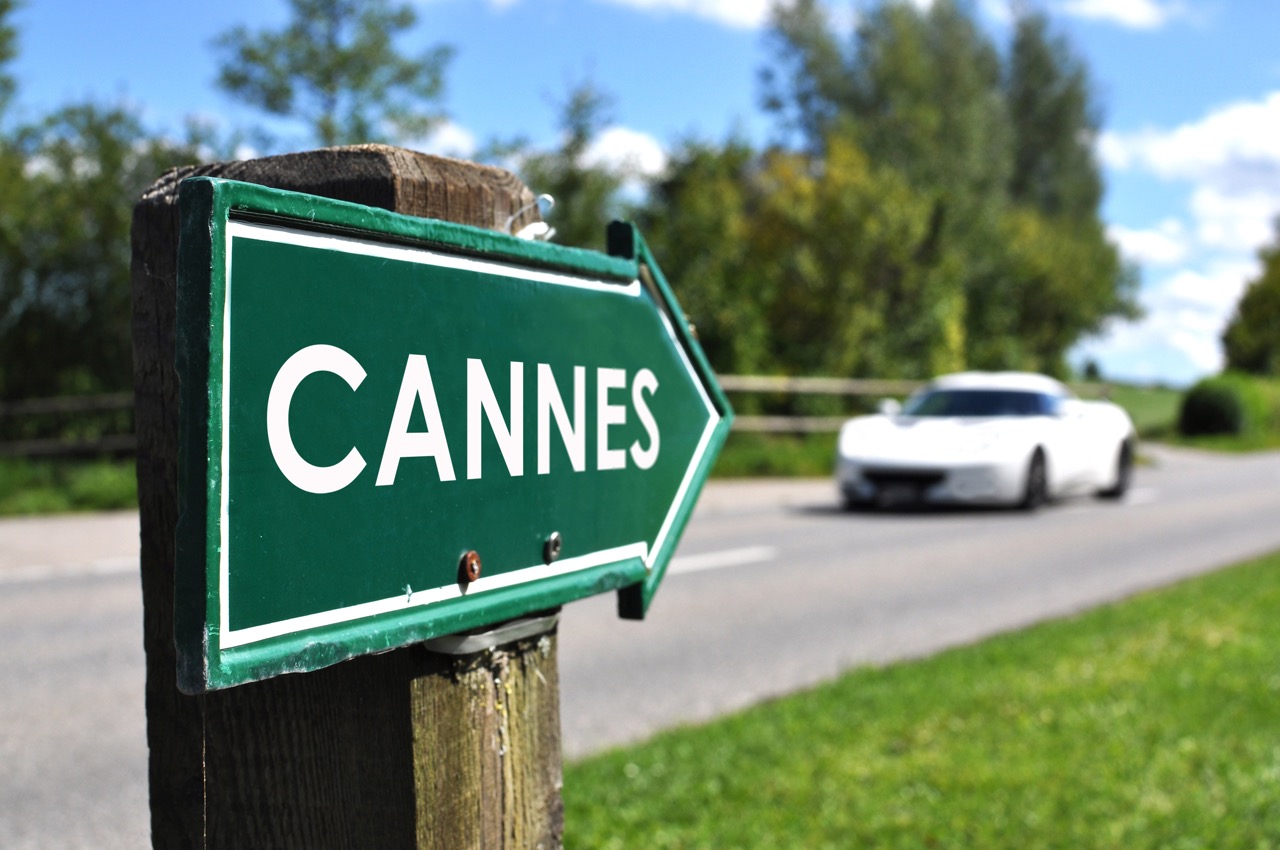
La Banane, Cannes (Center)
The area in the very centre of Cannes, clearly demarcated by and contained within the “voie rapide” or ring road, is known as La Banane because of its very obvious banana shape, the outer semi-circle being made up of the ring road and the inner semi-circle being made up of the beaches of the Croisette. La Banane is the very famous and “happening” nerve centre of Cannes; the luxurious hotels of the Croisette and the Rue d’Antibes, fabulous homes and apartments, and the trendy gastronomic restaurants and clubs are all situated in this lively area, containing also the “Carré d’Or” or “Golden Square” for the chic and the “richesse” which define it. Property is at a premium. The principal interior artery of La Banane is the Rue d’Antibes, running parallel to the Croisette and highly reputed for its boutiques, chic apartments and designer label shops. The Croisette itself is the southern and the other principal artery, both of them running east / west and both exuding chutzpah. Audacious and unashamed! This is the area particularly sought after by property investors, especially if they have apartment rentals in mind or want a super second home; its proximity to the Boulevard de la Croisette and the Palais des Festivals ensures that it is booked to capacity for each and every congress and event, and its beautiful beaches, famously easy-going lifestyle and easy accommodation in hotels or apartments attracts holiday-makers.
![fullsizerender[1]](https://services-media.propertylogic.net/website/1453828143/fullsizerender[1].jpg)
La Californie, Cannes
La Californie, one of the more exclusive neighbourhoods in Cannes, shares many characteristics with its namesake across the Atlantic: the climate, upscale residential property, luxury villas and apartments, and residents and visitors from all over the world. Situated on the eastern side of Cannes, perched within a screen of greenery and enjoying close proximity to the sea, La Californie is the hide-away of places with names borrowed from history such as Villa Fiesole, La Résidence du Château de Thorenc, La Villa Fiorentina, Le Château Louis XIII, La Villa Rothschild, and La Villa St Prieste. La Californie is also known as “la colline des milliardaires” or the “hill of billionaires”, being home to large estates and boasting splendid and panoramic views from the snowy Alps in the east to the red Esterel Mountains in the west, with Nice clearly visible in the distance, and the Cap d’Antibes, Juan les Pins and Cannes just below. The Isles de Lérins lie just off-shore; St Honorat with the oldest working monastery in Europe and St Marguerite home to the fort in which the Man with the Iron Mask was imprisoned for 14 years. The views are simply breathtaking and obviously the prices of property in La Californie are at prestige levels, similar to those on La Croisette. If you already know that you want to live in La Californie, you might also know you want to live in the Avenue Roi Albert. It is “the” address in La Californie, and some would say in all of Cannes. But there is competition for that claim to fame – so suffice to say that some of the most historic buildings and some of the most beautiful properties in Cannes built there by the Russians, the Americans and the English are still there today. Victoria and Albert enjoyed their holidays there, Edward and Wallis Simpson, the Rothschilds, and the Russian aristocracy all lived, holidayed and socialised there, and most importantly, recent additions to the architecture in La Californie have respected the tradition and the quality of their forebears. World class property!
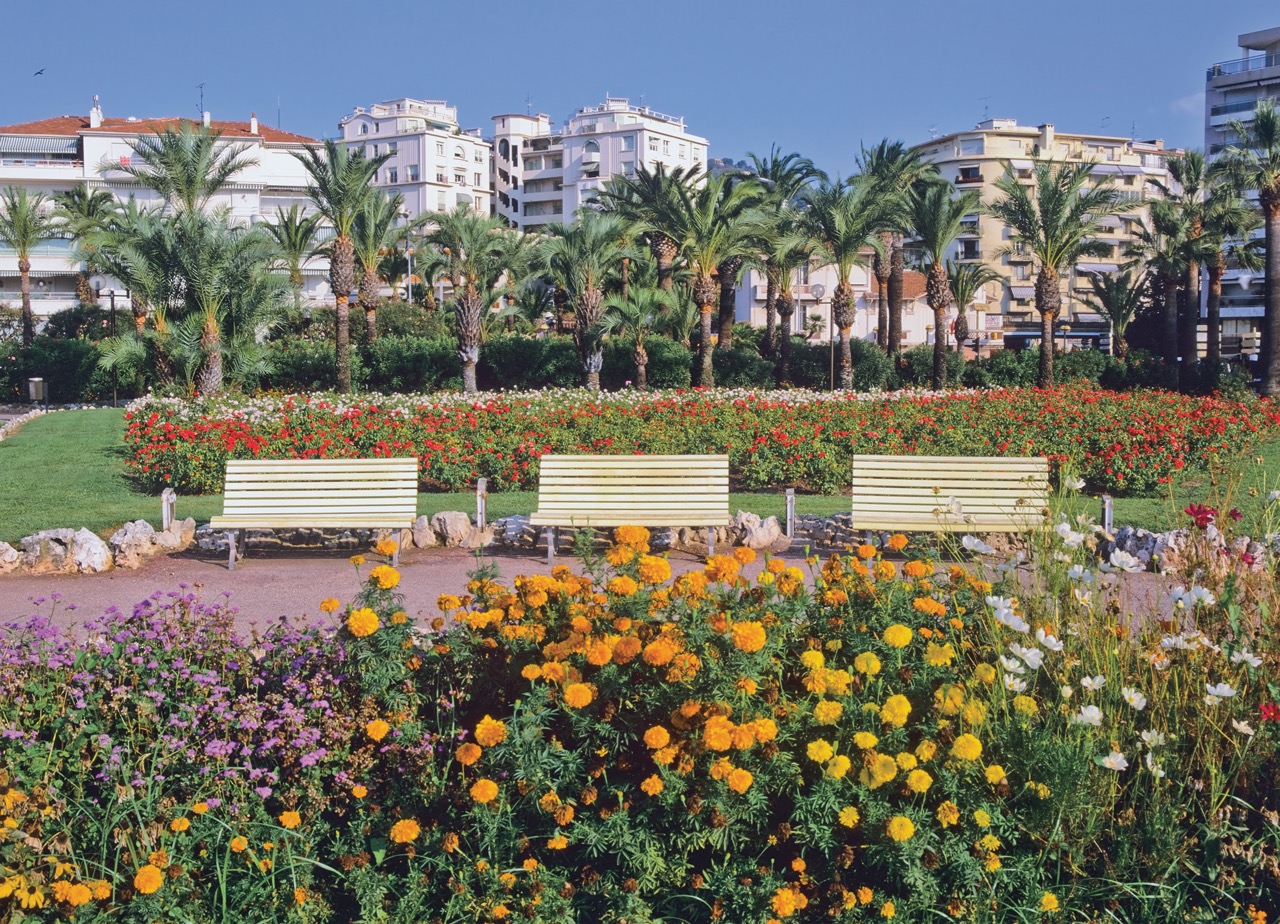
Basse Californie, Cannes
Riviera home to luxury apartments, prestige villas and the dream homes of the discerning. As the name implies this suburb, composed largely of prestigious luxury villas and apartment buildings, is situated on the lower slopes of the elegant and historic suburb of La Californie. It is less treed and leafy than La Californie itself but has the advantage of being closer to the centre of the city, the famous “La Banane”, or the “The Banana”, so named because of its shape, wrapping itself around the Bay of Cannes as it does. It is a highly prized residential area of Cannes for the multiple advantages of its easy access to town, its proximity to the beaches and the sea, to the shopping Mecca which is the Rue d’Antibes, the famous and glitzy Croisette, and all the conveniences and pleasures that make Cannes what it is. In Basse Californie you are not far from anywhere!
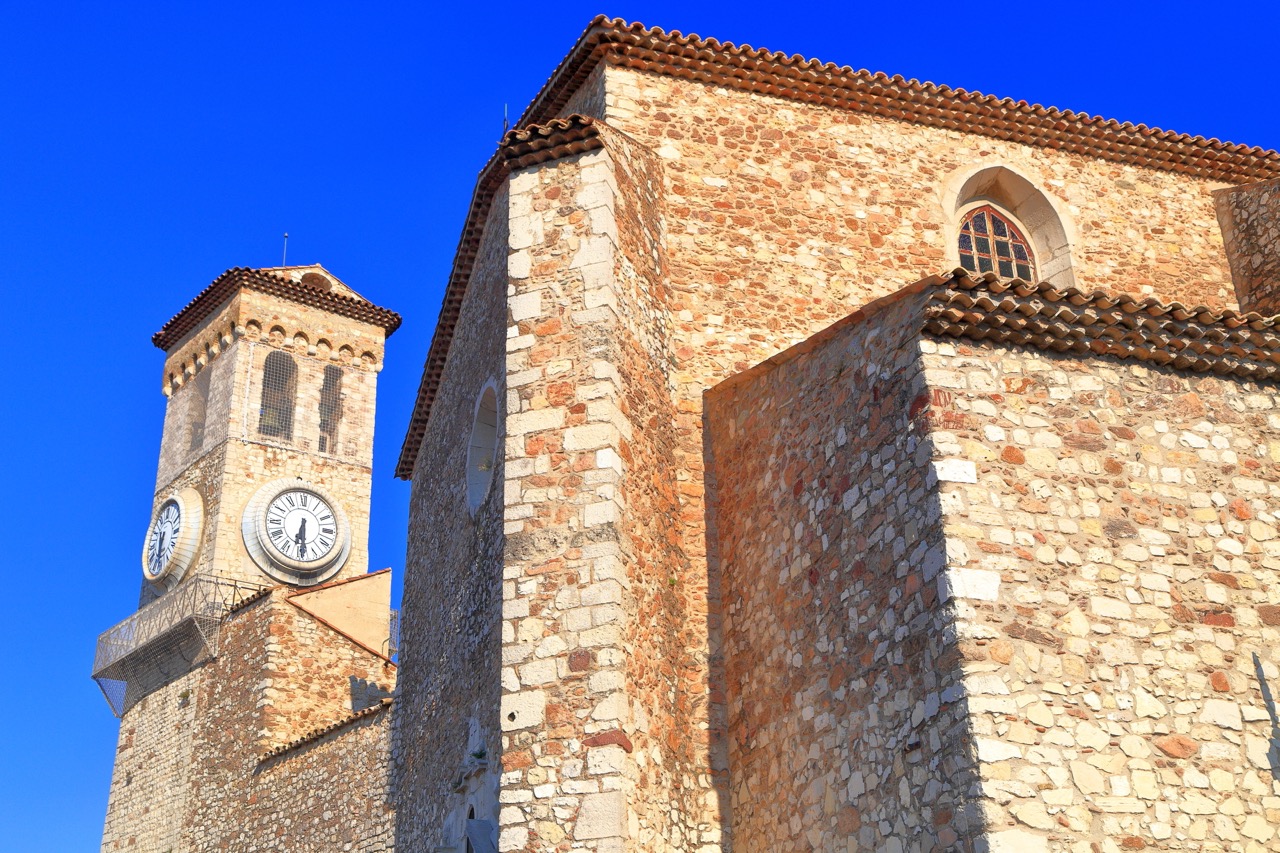
Marche Forville, Forville Market and the Suquet, Cannes
At the base of Le Suquet and just off the Quai Saint Pierre is the famous Marché Forville, open six days a week for fresh local Provencal products prized by the residents of Cannes and “star” restaurateurs from all over the Cannes valley and further afield. Only on Mondays is it not open for produce, but it becomes a wonderful antiques market that many visitors to Cannes take pleasure from visiting. Marché Forville is entirely covered and open sided, extending across an entire block, and a visit to Cannes without a visit to Marché Forville is without doubt an opportunity missed. Fresh fruit and vegetables, pastas, preserves, charcuterie, cheeses, fish and shellfish, speciality meats and flowers all so mouth-wateringly fresh are on offer and the place is a buzz of activity and ablaze with local colour. A good measure of its quality and the values to be found here are that locals flock here in their thousands every week, and most especially at weekends. Surrounding the market are more specialist stalls, bakers and patisseries, coffee shops and vintners, and it is a local tradition to gather round the tables on the pavements and enjoy a glass of wine or champagne with some fresh oysters opened on the street, or olives from the region, and talk, bask in the sunshine and watch the activity all around while the children play in complete safety. This is what is meant when people talk of the quality of life available, especially on the Cote d’Azur. It is a further feature of Cannes that the ancient and the traditional sit comfortably with the ultra modern and the chic. One only has to sit at a well worn square of rough and dusty gravel atop Le Suquet and watch the locals excitedly partake of a match of pétanque (boules) in age-old fashion, and then walk down the hill to see some of the world’s most expensive super-yachts in the Old Port not five minutes away, or wander past the state-of-the-art Palais des Festivals, along the Croisette or the Rue d’Antibes with their super-modern touches amongst the ancient, to realise that the ancient is preserved while the modern is all around. And there is a surprising harmony, a real quality of life, and a complete absence of conflict.
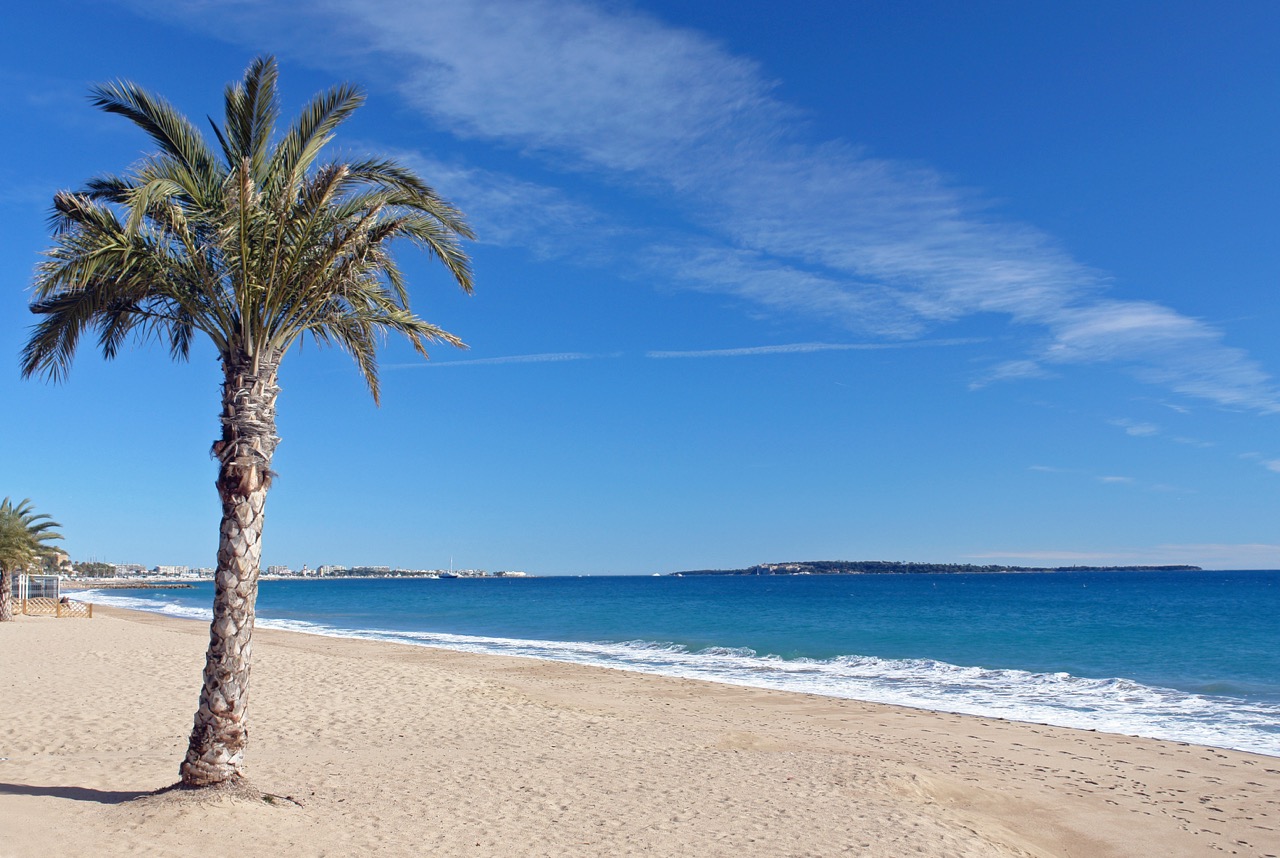
Montrose and Montfleury, Cannes
Montrose (bordering Montfleury) Is the pleasant residential suburb which rises towards the hills from the centre of Cannes, but is so close as to be nearer to the centre of Cannes than Palm Beach so property is in demand with some lovely villas available at reasonable prices. The map will show you how close it actually is – a very easy walk to town. For investors needing rental income it is popular for holiday or longer term lets rather than conference rentals, but it is also very popular, being so close to the centre of town, with those wishing to own a home or second home. As “pied à terre” in Cannes it would be hard to beat. The little suburbs of Montrose and Montfleury sit just to the west of La Californie and between Cannes and Le Cannet. They are lovely, green and quiet residential areas, very close to the centre and much sought after by the Cannois (the people of Cannes) looking for the affordable villa of their dreams.

Le Suquet, Cannes
Le Suquet is the historic centre of Cannes and winds its way up the hill from the Old Quai Saint Pierre which served as the port for the Old Town in days gone by and still does so today. The Palais des Festivals (a symbol of an entirely different era – and ultra modern) sits heavily on the opposite side of the Quai from Le Suquet. With buildings and architecture dating back to the 10th century, climbing, winding, cobbled streets, past apartments of character, shops, stalls and traditional restaurants, and sitting at the western end of the ultra chic Rue d’Antibes, Le Suquet (the heart of the Old Town) itself is predominantly pedestrian, offering a genuinely historic hill-top village ambiance within the city. At the summit is an ancient church (not a cathedral so Cannes can’t be called a city) topped by a clock tower visible from almost everywhere in the valley – a genuine landmark. The mediaeval protective wall still encircles parts of the summit, and the original fisherman’s houses tumble across and around one another today, inside and outside the old walls, and spill down the hill towards the Old Port. Many of the old houses have been transformed into the most charming luxury apartments to suit the needs of people today, whilst retaining the character of old. This charming and multi-coloured Provencal fishing village which is Le Suquet is highly sought after real-estate today. Its proximity to the heartbeat of the Riviera, the Palais des Festivals, La Coisette, and the Rue d’Antibes, and its profusion of world class restaurants and apartment accommodation make it an international attraction in its own right.
![fullsizerender[28]](https://services-media.propertylogic.net/website/1453828143/fullsizerender[28].jpg)
Petit Juas, Cannes
Parallel to the principal artery leading in and out of Cannes, the Boulevard Carnot, the chic old suburb of Petit Juas is close to the centre of the city and the Croisette. It occupies the hillside overlooking Cannes from the North West, opposite to La Californie which overlooks Cannes from the Eastern hillsides, Cannes being in the valley between. Behind Petit Juas one climbs further into the hills and into the exclusive suburb of La Croix des Gardes. Petit Juas is made up of little streets, many of them one way, colourful apartments and gorgeous “bourgeois” and “belle epoch” houses and villas which are proudly looked after and preserved. It is more “French” than La Californie and La Croix des Gardes both of which experienced a great deal of foreign influence a century and more ago when the English, the Russians and the Americans built some huge and wonderful villas and residences, many of which are renovated residences of character today. Petit Juas is less imposing, and for this reason it is an up-and-coming suburb in Cannes. There is a great deal of building and renovation taking place continuously and the character of the suburb is jealously respected. We have seen property values rise considerably in the area because it is very much in demand and a lot of young people live in Petit Juas because it is “vibey” and apartments are affordable, and so very close to Cannes. The area is quiet, quaint, and has an “old France” character and feel. Parking is a nightmare as you would expect in these narrow streets, but somehow the atmosphere is very relaxed, and the charm is pervasive. People living in Petit Juas never want to move!
La Croix des Gardes, Cannes
The area comprises just 80ha of hillside that was some of the most sought after real estate available when Cannes was being developed more than 100 years ago. Its luxury residences enjoy magnificent views south and westward over the Bay of Cannes, the Iles de Lérins, and the Massifs of the Esterel and the Tanneron. The leafiest suburb of Cannes, La Croix des Gardes exudes a great feeling peace and quiet although it is less than a kilometre as the crow flies from the emblematic Boulevard de la Croisette and the lively centre of Cannes. Residents of La Croix des Gardes generally wouldn’t wish to live anywhere else, and there are some extremely up-market apartment blocks, luxury homes and classic villas many of them retained as second homes. Residents and visitors alike love its easy access to everything that they require. Many of the stately villas and quality residences, classic bourgeois and protected, are spacious and private with sweeping lawns and gardens, with private access to beaches, and allow for an enviable quality of life.
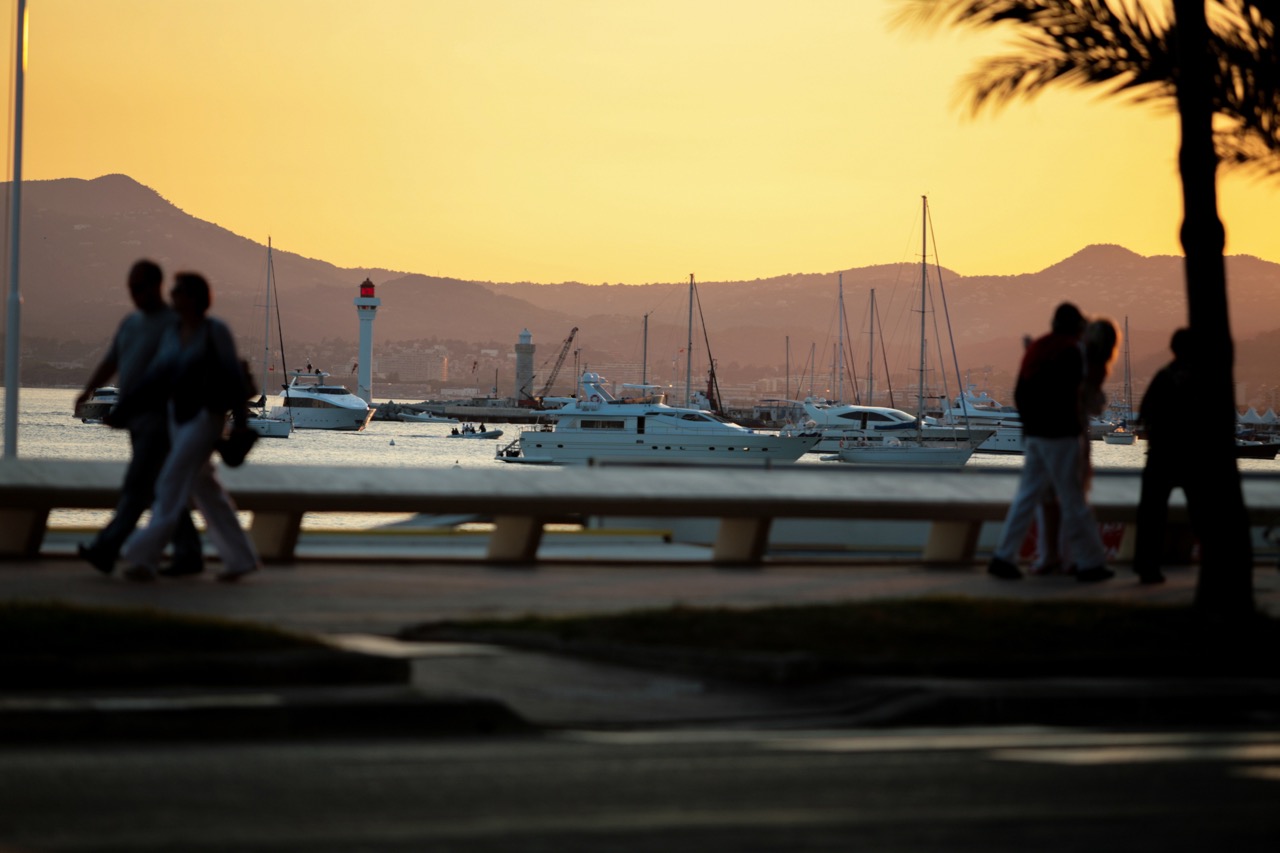
Rue d'Antibes, Cannes
For anyone who has not experienced the Rue d’Antibes, the second most popular shopping street in France after the Champs Elysee, it is a feast for the senses. The architecture is a beautifully preserved mix of “belle epoch”, “bourgeois” and “art deco” – some of the best preserved anywhere with apartment buildings and luxury residences making up the majority of it. There are beautiful homes all along the length of it. It is a narrow street, only one lane wide with traffic moving from east to west, with very wide pavements and pedestrians most definitely rule! The street is decorated with floral displays and huge and exotic hanging baskets as far as the eye can see. People from around the world flock to it to shop in some of the most prestigious shops, in galleries, or just to sit and sip espresso or a glass of rosé on the pavement and watch the world passing bye. It is a street without restaurants, bars and clubs, and with minimal traffic so it goes quiet in the evening which suits residential apartment dwellers perfectly. The night life is in the surrounding streets and those leading off the Rue d’Antibes, but not on the Rue d’Antibes itself.
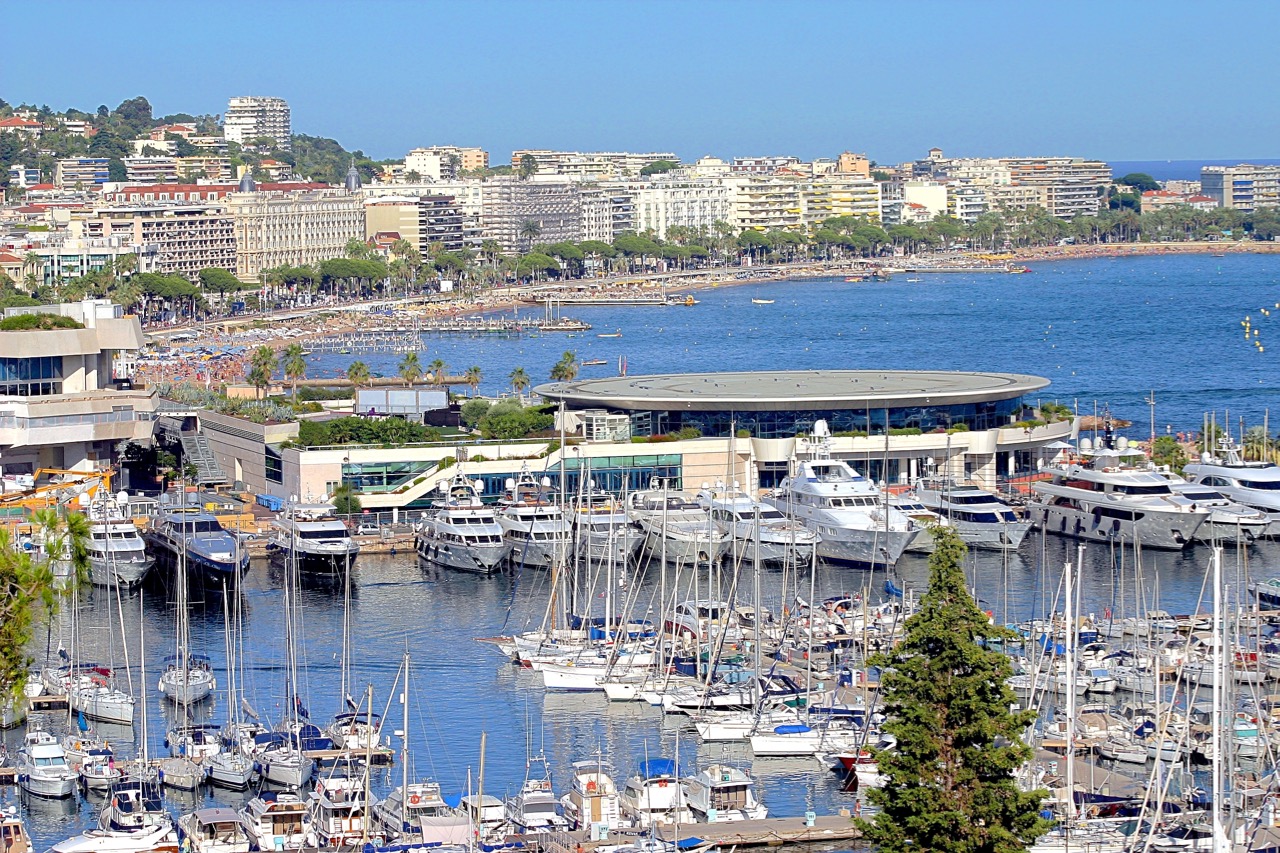
Palais des Festivals, Congress Center, Cannes
For anyone who has not experienced the Rue d’Antibes, the second most popular shopping street in France after the Champs Elysee, it is a feast for the senses. The architecture is a beautifully preserved mix of “belle epoch”, “bourgeois” and “art deco” – some of the best preserved anywhere with apartment buildings and luxury residences making up the majority of it. There are beautiful homes all along the length of it. It is a narrow street, only one lane wide with traffic moving from east to west, with very wide pavements and pedestrians most definitely rule! The street is decorated with floral displays and huge and exotic hanging baskets as far as the eye can see. People from around the world flock to it to shop in some of the most prestigious shops, in galleries, or just to sit and sip espresso or a glass of rosé on the pavement and watch the world passing bye. It is a street without restaurants, bars and clubs, and with minimal traffic so it goes quiet in the evening which suits residential apartment dwellers perfectly. The night life is in the surrounding streets and those leading off the Rue d’Antibes, but not on the Rue d’Antibes itself.
DISCOVER MORE ABOUT FINE & COUNTRY
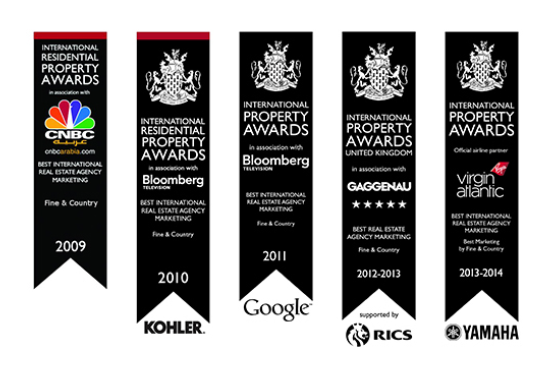
MULTI-AWARD WINNING
Our consistent efforts to offer innovative marketing combined with a high level of service have been recognised by the industry for an astounding fifth year in a row, winning Best International Real Estate Agency Marketing at the International Residential Property Awards.
SOCIAL MEDIA
We interact with customers on the main social media channels including Facebook, Twitter, YouTube, LinkedIn, Pinterest and Google+, giving each property maximum online exposure.
Media Centre
MEDIA CENTRE Our internal Media Centre is a team of experienced press relations managers and copy writers dedicated to liaising with newspapers, magazines and other media outlets to gain extensive coverage for our properties in national and local media.


Fine & Country Foreign Exchange
We have partnered with IFX, one of the world’s leading foreign exchange specialists to provide private and tailored currency services for all of our clients buying and selling luxury property around the world. Find out how we can help »



